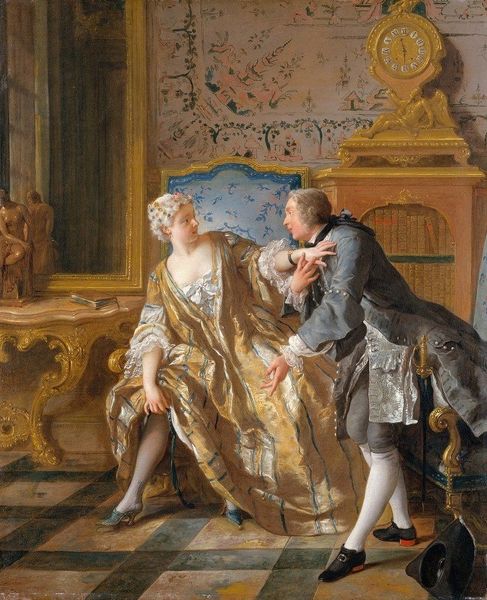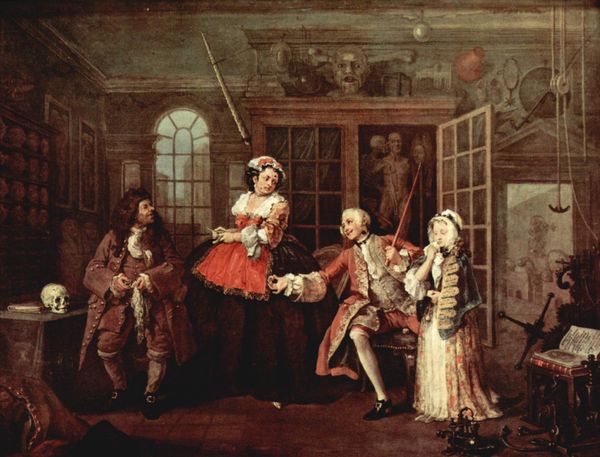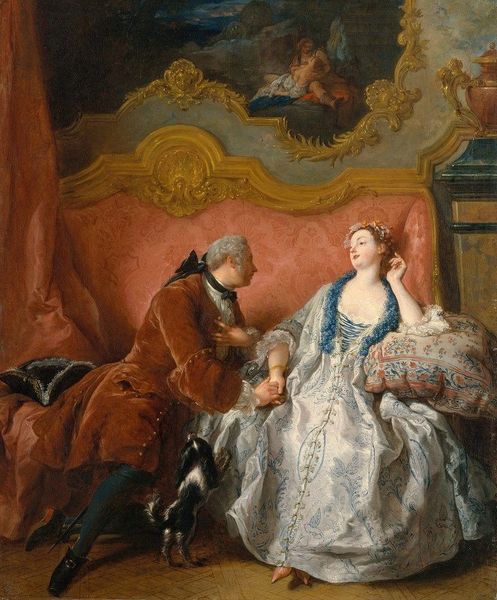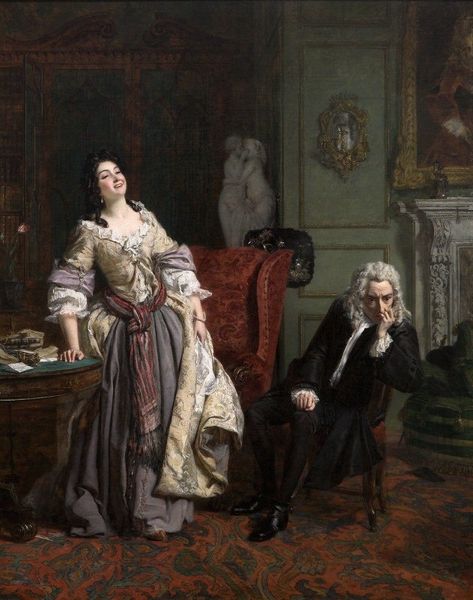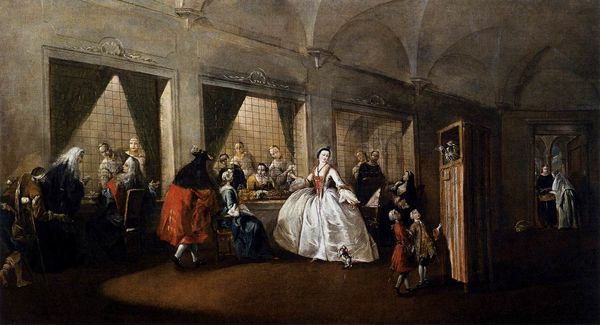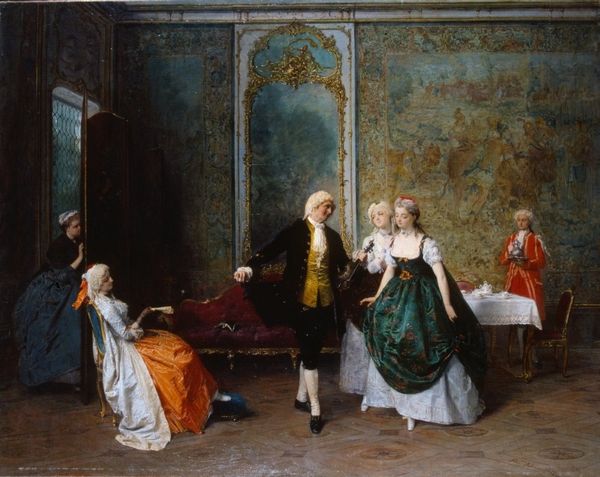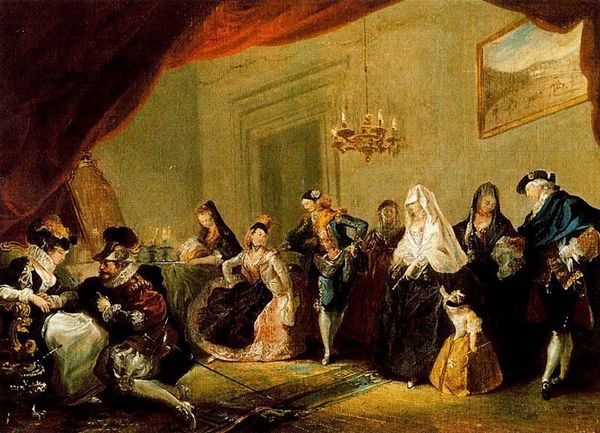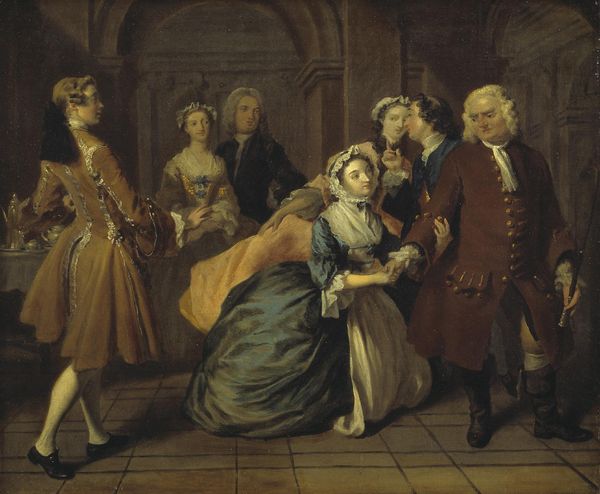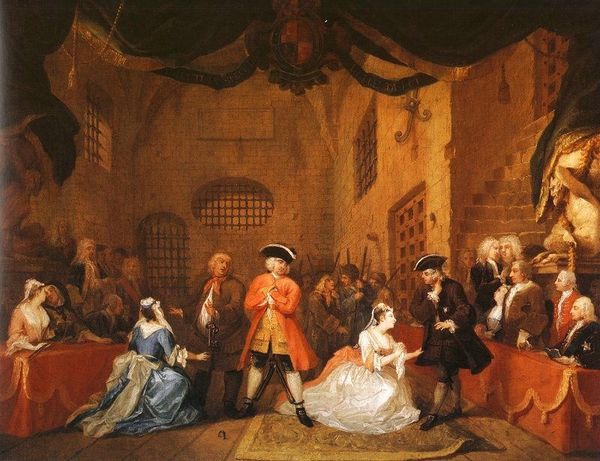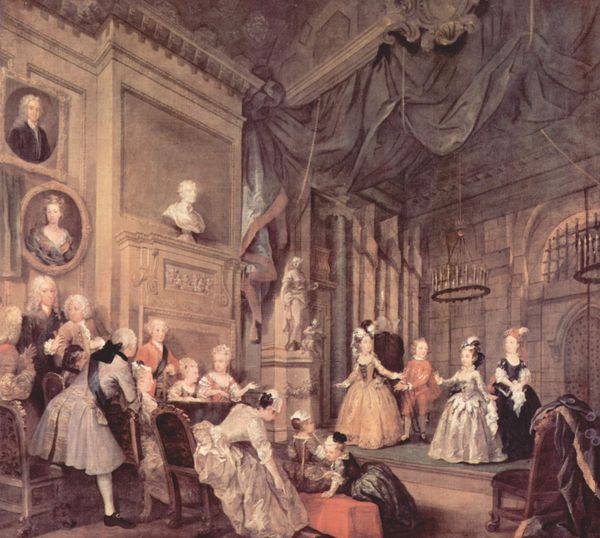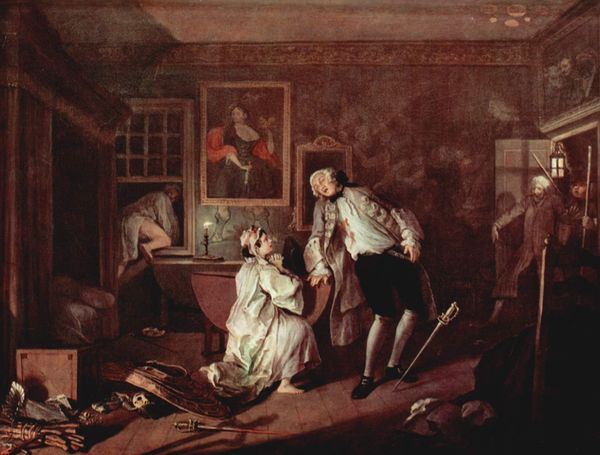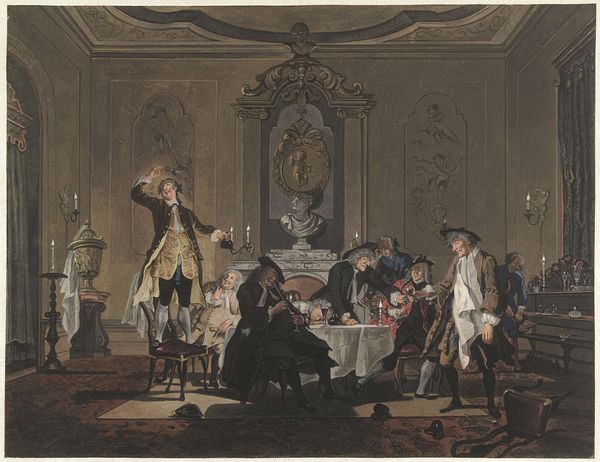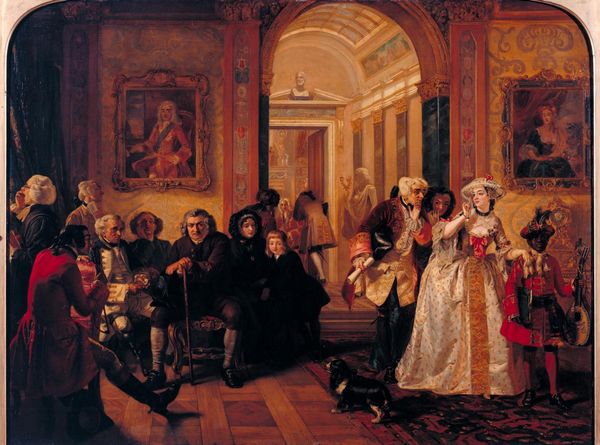
The Tete-a-Tete 1743
Dimensions: 91 x 70 cm
Copyright: Public domain
William Hogarth created "The Tete-a-Tete" without a specified date, using oil on canvas, and it’s now housed here at the National Gallery in London. This painting is part of a series called "Marriage A-la-Mode," which satirizes the arranged marriages and moral decay of the 18th-century English upper class. Hogarth uses visual cues to critique the social institutions of his time. The disarray in the room, the couple's body language, and the presence of the accountant with unpaid bills all speak to the financial and moral irresponsibility of the aristocracy. The paintings in the background and the classical sculptures suggest a veneer of culture, but the reality is one of neglect and dissipation. Hogarth challenges the traditional role of art as mere decoration, using it instead as a tool for social commentary. To understand Hogarth fully, we can delve into historical records, letters, and other visual materials. The meaning of art is contingent on its social and institutional context.
Comments
No comments
Be the first to comment and join the conversation on the ultimate creative platform.
